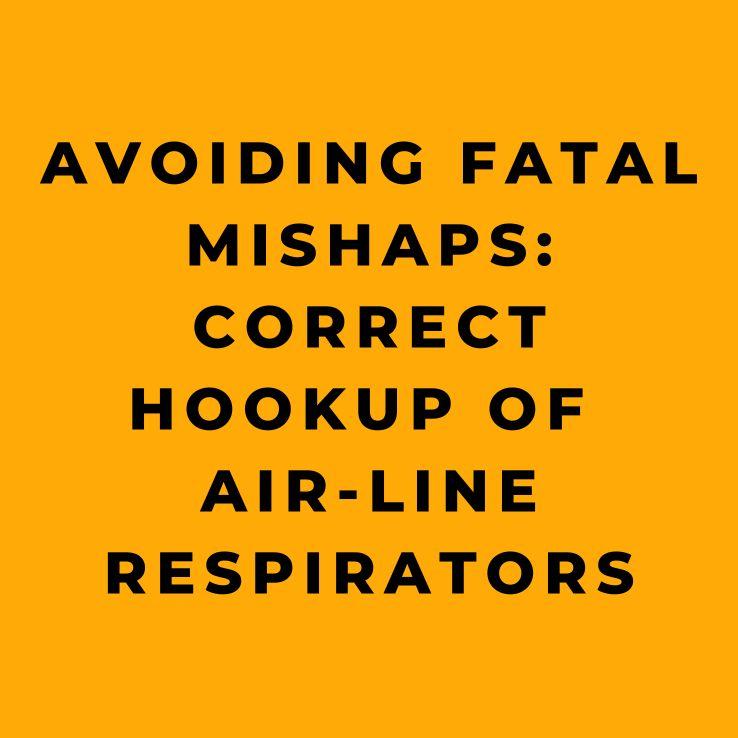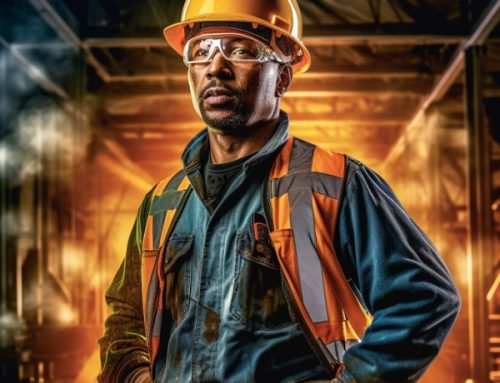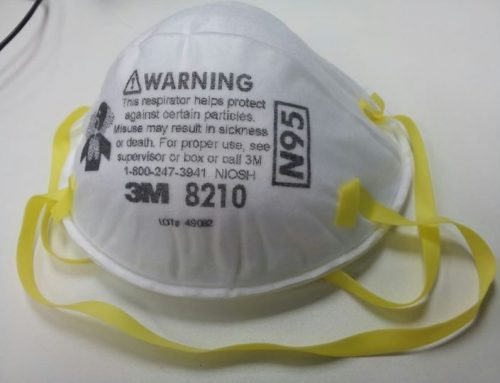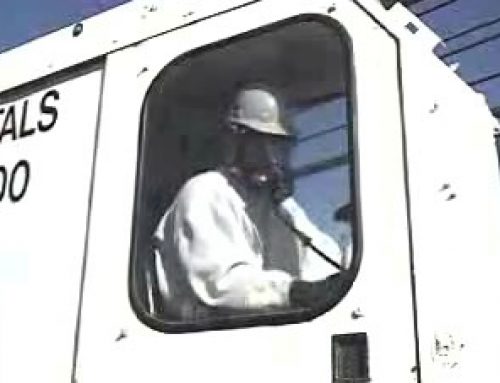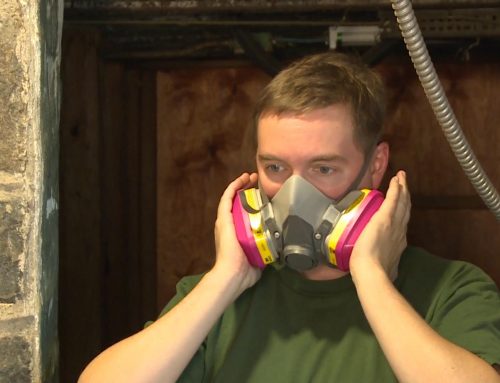Ladies and gents, pull up a chair and let me share some important info with you. Now, this isn’t your everyday run-of-the-mill guidebook, but it sure as heck is something every employer should know. And while there’s no legal obligation to follow this, it might just help create a safer and healthier workplace for everyone involved.
Safety is no joke, especially when you’re working with air-line respirators. Turns out, many employers may not be taking the necessary steps to prevent a rather serious, and potentially fatal, accident from improper use of these devices. Now, you wouldn’t expect to connect your respirator to a supply of inert gas instead of breathable air, would you? But it happens.
Over a decade of investigation reports from our friends at the Occupational Safety and Health Administration (OSHA) have shown that most fatalities could have been prevented with proper training and compliance with existing regulations. From lack of supervision to coupling compatibility issues, these deaths are grim reminders of the importance of getting it right.
Both OSHA and the American National Standards Institute specify that air-line couplings must not mix with outlets for other gas systems. Sounds simple enough, but even a small mistake can have tragic consequences.
Picture this: instead of breathable air, your respirator is fed with an inert gas like helium, argon, or nitrogen. These gases, useful in fire suppression and operating pneumatic equipment, can be fatal if inhaled directly. When connected to your respirator, you’d barely have any warning before blacking out. This is because it’s carbon dioxide buildup, not oxygen shortage, that gives us that feeling of breathlessness. In the zero-oxygen atmosphere inside your mask, unconsciousness strikes in about 12 seconds, with death following shortly after.
We’ve seen a range of cases where this nightmare has become reality. Employees and contractors alike, from aluminum foundries to petrochemical refineries, have fallen victim to this dangerous error. Many times, the culprit is lack of labeling or identical connections for different gases, leading to fatal mix-ups.
So, what can we do about this? First and foremost, check your respiratory protection programs and ensure those air-line respirator couplings don’t match any other fittings at your worksite. If they do, you’ve got some changing to do.
Ensure your breathable air system is completely separate from other gas lines. Label everything clearly and color-code gas lines where possible. Lastly, make sure you have clear standard operating procedures and training programs in place for using respirators.
So now that we’ve understood the severity of the issue and how grave the consequences can be, let’s shift our focus towards prevention and solution. Here’s a comprehensive checklist – a step-by-step guide if you will, for you to follow in order to ensure the safe and correct use of air-line respirators at your workplace:
- Verify the Respiratory Protection Program: Ensure your organization’s respiratory protection program is up-to-date and compliant with OSHA and ANSI standards.
- Check Air-Line Respirator Couplings: Make sure that the air-line respirator couplings do not match any other fittings at your workplace. They should be distinct to avoid accidental mix-ups.
- Separate Breathable Air System: Your breathable air system should be separate from other gas lines. If they are not, make necessary changes immediately.
- Label Everything Clearly: Each gas line and coupling should be clearly marked with their specific purpose. This should eliminate confusion and prevent accidents.
- Use Color Coding: Consider using color-coding as an additional layer of distinction between different gas lines. Different colors for different gases can make identification quicker and easier.
- Establish Standard Operating Procedures (SOPs): Develop clear SOPs for the use of respirators and other equipment that uses gas lines. Ensure everyone understands these procedures.
- Implement Training Programs: Regularly train your employees on the correct use of respirators, recognizing gas line couplings, and the importance of these safety measures.
- Regular Inspection and Maintenance: Set up a routine schedule for inspecting gas lines, respirators, and other equipment to ensure they are in good condition and properly labeled.
- Emergency Response Plan: Have a plan in place for what to do if something does go wrong. This should include first aid procedures, emergency contact information, and steps to prevent further incidents.
- Continuous Improvement: Regularly review and update your safety protocols based on new information, incidents, or near-misses. Constantly strive for a safer work environment.
Quick Connectors
Quick note about quick connectors:

The diagram in figure above illustrates the correct procedure for connecting sections of air supply hose using locking quick disconnects. These disconnects are designed for ease of use – to connect, simply push the plug and socket together. Disconnecting involves a safety feature, requiring the plug and socket to be pushed together and the sleeve on the socket to be retracted from the plug.
Quick connectors play a crucial role in the safe usage of supply hoses by facilitating connection to specific gas outlets. These connectors are ingeniously designed with varied shapes or spacing for their mating portions, or a combination of these features. This intelligent design prevents the possibility of erroneously inserting the supply hoses into an incorrect gas outlet.
Conclusion
In conclusion, we must remember that safety isn’t a destination, but a continuous journey. It’s about maintaining vigilance, educating ourselves and our teams, and ensuring we adhere to the best practices at all times. The use of air-line respirators and the proper management of gas supplies are crucial aspects of maintaining a safe working environment. Yet, as we’ve seen, even the smallest mistake can have disastrous consequences.
By implementing the strategies we’ve outlined – from checking your respiratory protection program and ensuring distinct couplings for air-line respirators, to creating clear SOPs and robust training programs – you are taking proactive steps towards preventing accidents. Remember to utilize quick connectors correctly, as these handy devices play a pivotal role in ensuring the safe operation of supply hoses.
Moreover, it’s crucial to remember that safety measures should never be static. They should evolve and improve based on new knowledge, feedback, and experiences. Regular inspections, maintenance, and reviews of safety protocols are essential components of a comprehensive safety program.
Let this article serve as a reminder of the significance of proper safety protocols and the tragic consequences that can ensue when these are overlooked. By prioritizing safety, not only do we preserve lives, but we also build a stronger, healthier, and more productive work environment for all. Because in the end, nothing is more important than the wellbeing of our workforce. They are our greatest asset and it’s our responsibility to ensure their safety.


